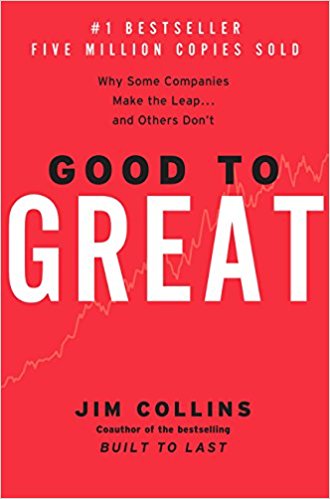Editorial Reviews
Amazon.com Review
Five years ago, Jim Collins asked the question, “Can a good company become a great company and if so, how?” In Good to Great Collins, the author of Built to Last, concludes that it is possible, but finds there are no silver bullets. Collins and his team of researchers began their quest by sorting through a list of 1,435 companies, looking for those that made substantial improvements in their performance over time. They finally settled on 11–including Fannie Mae, Gillette, Walgreens, and Wells Fargo–and discovered common traits that challenged many of the conventional notions of corporate success. Making the transition from good to great doesn’t require a high-profile CEO, the latest technology, innovative change management, or even a fine-tuned business strategy. At the heart of those rare and truly great companies was a corporate culture that rigorously found and promoted disciplined people to think and act in a disciplined manner. Peppered with dozens of stories and examples from the great and not so great, the book offers a well-reasoned road map to excellence that any organization would do well to consider. LikeBuilt to Last, Good to Great is one of those books that managers and CEOs will be reading and rereading for years to come. —Harry C. Edwards
From Publishers Weekly
In what Collins terms a prequel to the bestseller Built to Last he wrote with Jerry Porras, this worthwhile effort explores the way good organizations can be turned into ones that produce great, sustained results. To find the keys to greatness, Collins’s 21-person research team (at his management research firm) read and coded 6,000 articles, generated more than 2,000 pages of interview transcripts and created 384 megabytes of computer data in a five-year project. That Collins is able to distill the findings into a cogent, well-argued and instructive guide is a testament to his writing skills. After establishing a definition of a good-to-great transition that involves a 10-year fallow period followed by 15 years of increased profits, Collins’s crew combed through every company that has made the Fortune 500 (approximately 1,400) and found 11 that met their criteria, including Walgreens, Kimberly Clark and Circuit City. At the heart of the findings about these companies’ stellar successes is what Collins calls the Hedgehog Concept, a product or service that leads a company to outshine all worldwide competitors, that drives a company’s economic engine and that a company is passionate about. While the companies that achieved greatness were all in different industries, each engaged in versions of Collins’s strategies. While some of the overall findings are counterintuitive (e.g., the most effective leaders are humble and strong-willed rather than outgoing), many of Collins’s perspectives on running a business are amazingly simple and commonsense. This is not to suggest, however, that executives at all levels wouldn’t benefit from reading this book; after all, only 11 companies managed to figure out how to change their B grade to an A on their own.
Copyright 2001 Cahners Business Information, Inc.
From Booklist
Collins is coauthor of Built to Last: Successful Habits of Visionary Companies (1994), the widely heralded book that was the result of a six-year research project conducted by Collins and Jerry Porras. They identified 18 companies that met their rigorous standard for long-term performance. They looked for companies that had outperformed the stock market by a factor of 15 starting from 1926. Then they went about the task of identifying what these companies had in common. Now Collins turns his attention to companies that have made the transition from “good to great.” This time the findings are backed by five years of research and data analysis. Starting with every company that ever appeared in the Fortune 500, Collins identifies 11 companies that had 15-year cumulative stock returns at or below the general stock market when, after a transition point, they then demonstrated cumulative returns of at least three times the market over the next 15 years. Collins then looked for similarities among the companies. What he found would both surprise and fascinate anyone involved in management. David Rouse
Copyright © American Library Association. All rights reserved
Review
One of the top ten business books of 2001 (Business Week)
About the Author
Jim Collins is author or coauthor of six books that have sold in total more than ten million copies worldwide, including the bestsellers Good to Great, Built to Last, andHow the Mighty Fall. Jim began his research and teaching career on the faculty at Stanford Graduate School of Business, where he received the Distinguished Teaching Award in 1992. He now operates a management laboratory in Boulder, Colorado, where he conducts research, teaches, and consults with executives from the corporate and social sectors.


